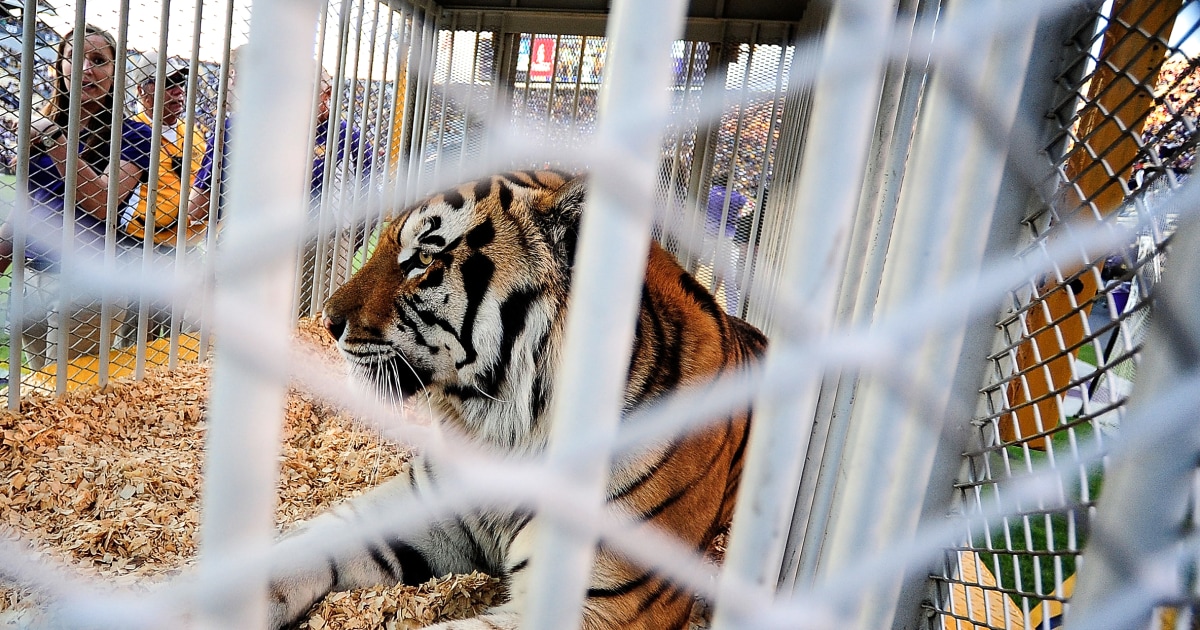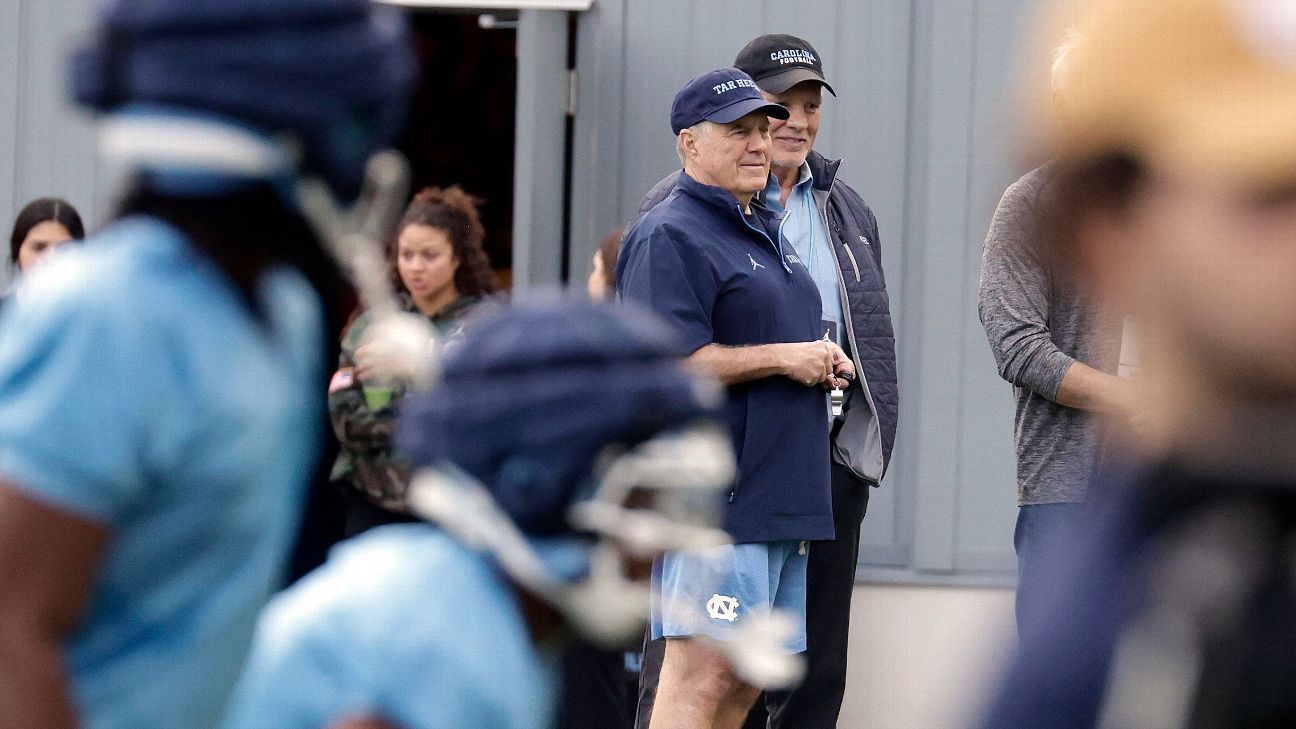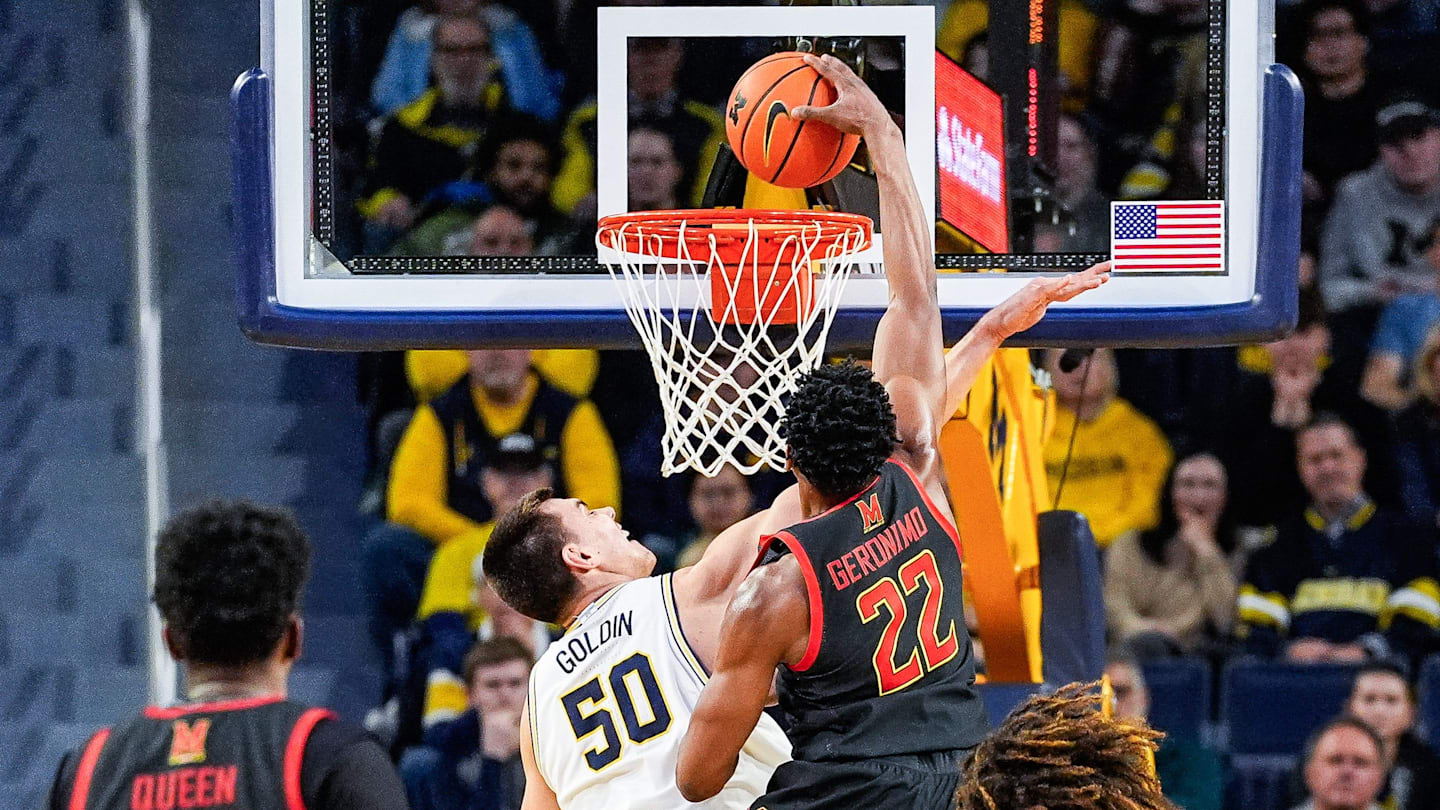Louisiana governor wants live tiger back at LSU football games

BATON ROUGE, La. — Gov. Jeff Landry confirmed his support on Tuesday of restarting the tradition of bringing Louisiana State University’s live tiger mascot onto the football field ahead of home games.
It has been nearly a decade since a Bengal Tiger has been rolled out in a cage under the lights of Death Valley, LSU’s famed Tiger Stadium in Baton Rouge, where the school’s football team plays. University officials have not publicly said whether they are willing to revive the tradition, but that didn’t stop Landry from sharing his own opinion when asked by reporters.
“I think the opportunity to bring our mascot back onto that field is an unbelievable opportunity,” Landry said during an unrelated news conference Tuesday.
People for the Ethical Treatment of Animals has vehemently objected to the idea. In early September, the organization sent a letter to Landry urging against the tradition, describing it as cruel and dangerous to the mascot’s welfare and adding that tigers are “naturally solitary animals who don’t belong in rowdy football stadiums.”
“Going back to the bad old days of using a wild animal as a sideline sideshow in 2024 is the last thing LSU should do, and PETA is appealing to Gov. Landry to drop this boneheaded idea,” the letter read.
On Tuesday, Landry said that “everybody that has some anxiety over this needs to calm down.”
The Associated Press emailed a spokesperson for LSU, the athletics department and the university’s School of Veterinary Medicine for a comment, but it did not receive an immediate response.
For years, the school’s live mascot would ride through the stadium in a travel trailer “topped by the LSU cheerleaders” before home games, based on information about the mascot on the LSU Athletics’ webpage. Before entering the stadium, the cage, with the tiger nicknamed Mike in it, would be parked next to the opponent’s locker room — forcing the visiting team to pass it.
Some of the live mascots even traveled with the team — brought to area games, the 1985 Sugar Bowl and the Superdome in New Orleans in 1991.
Following the death of the school’s tiger, Mike VI, in 2016, LSU announced that future Mike the Tigers would no longer be brought onto the field. According to the school’s website, Mike VI, who died from a rare form of cancer, had attended 33 of 58 home between 2007 and 2015.
While the university’s current live mascot, Mike VII — an 8-year-old and 345-pound tiger that was donated to the school from a sanctuary in 2017 — is not brought onto the field for games, visitors can still see the tiger in his 15,000-square-foot enclosure, which is on the campus and next to the stadium.
In the past, animal rights groups have called on LSU to stop keeping live tiger mascots. The school says it is providing a home to a tiger that needs one while also working to educate people about “irresponsible breeding and the plight of tigers kept illegally and/or inappropriately in captivity in the U.S.,” according to the athletics’ website.
Louisiana is not the only school that is home to a live mascot. Other examples include Yale University’s Handsome Dan, a bulldog; University of Texas at Austin’s Bevo the Longhorn, who appears on the field before football games; and University of Colorado’s Ralphie the Buffalo, who runs across the field with its handlers before kickoff.
Related
Penn State Football: Two Nittany Lions Spotlighted in SI’s NFL…
Penn State's Abdul Carter visited Cleveland this week, according to Sports Illustrated's Albert Breer, as he begins the post-combine tour of potenital NFL desti
Belichick: Up to UNC players to buy into product
David HaleMar 5, 2025, 06:45 PM ETCloseCollege football reporter.Joined ESPN in 2012.Graduate of the University of Delaware.CHAPEL HILL, N.C. -- Bill Belichick
Iowa football lands commitment from Class of 2026 3-star wide…
Video: Iowa football players volunteer in Big Brothers Big Sisters fundraiserIowa football players volunteered in a Big Brothers Big Sisters bowling fundraiser
Rockford Regents to compete in first women’s collegiate flag football…
ROCKFORD, Ill. (WIFR) - Rockford University will make history as one of the first schools in Illinois to play in a women’s collegiate flag football game. The













